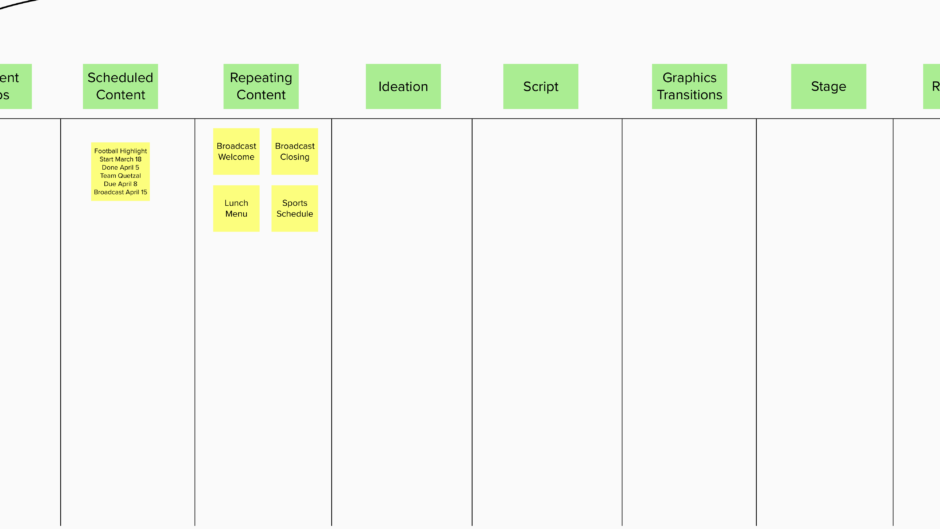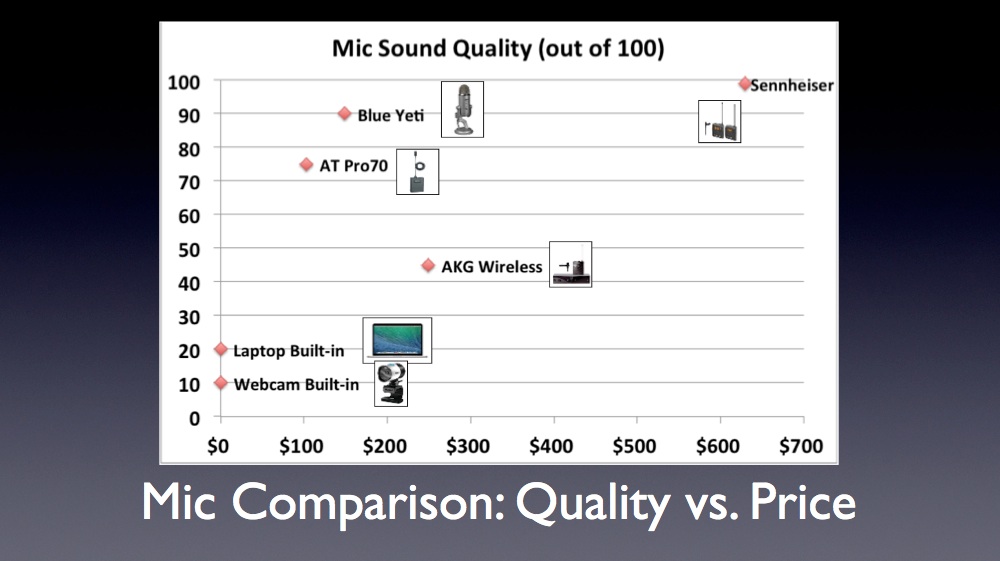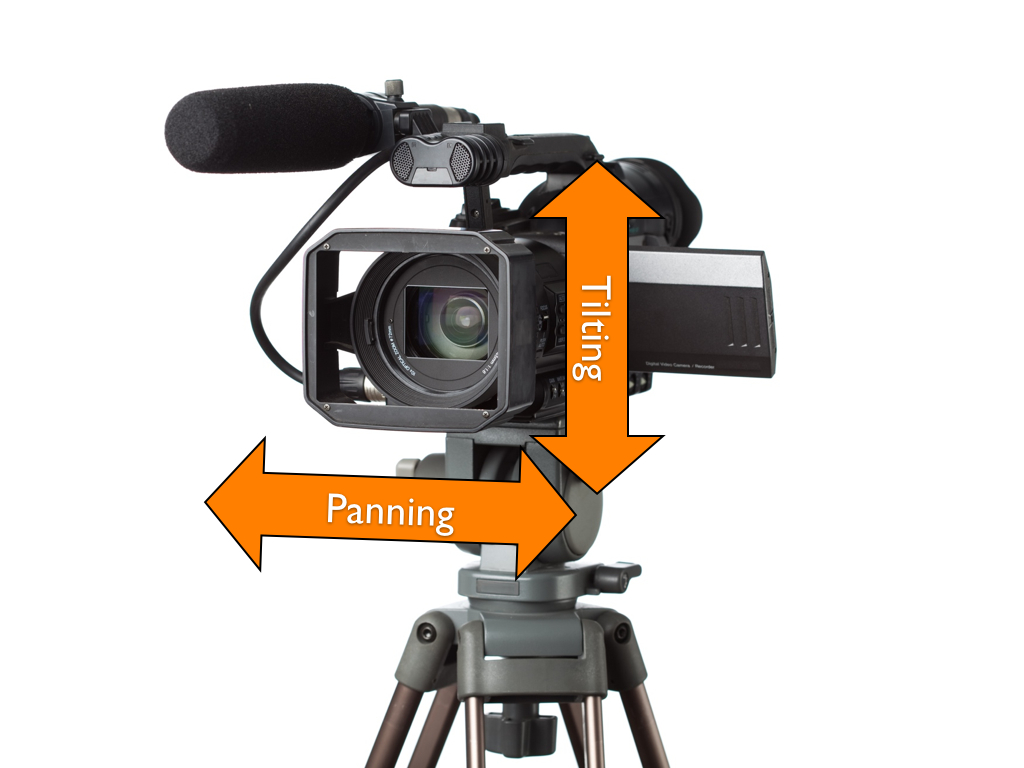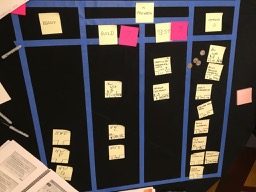The following article builds on a prior article about managing video production teams using a kanban system. This article discusses the use of a kanban system for the broadcast team to use the clips created by other teams using a broadcast video production workflow to assemble their daily or weekly live streaming broadcast.
My Background
Some may know me as a scrum master or Agile project manager (my third career). You may not know that my first serious career was as a public school teacher. After 14 years I started a business as a video producer and consultant. I’ve set up video studios and trained video broadcasts teams at 30 different organizations, mostly in the education space.
Video Production Workflow
A kanban system is an excellent way for video production teams and live broadcast teams to give their workflow visibility and help stakeholders understand where their projects are in relation to the planned broadcast date.
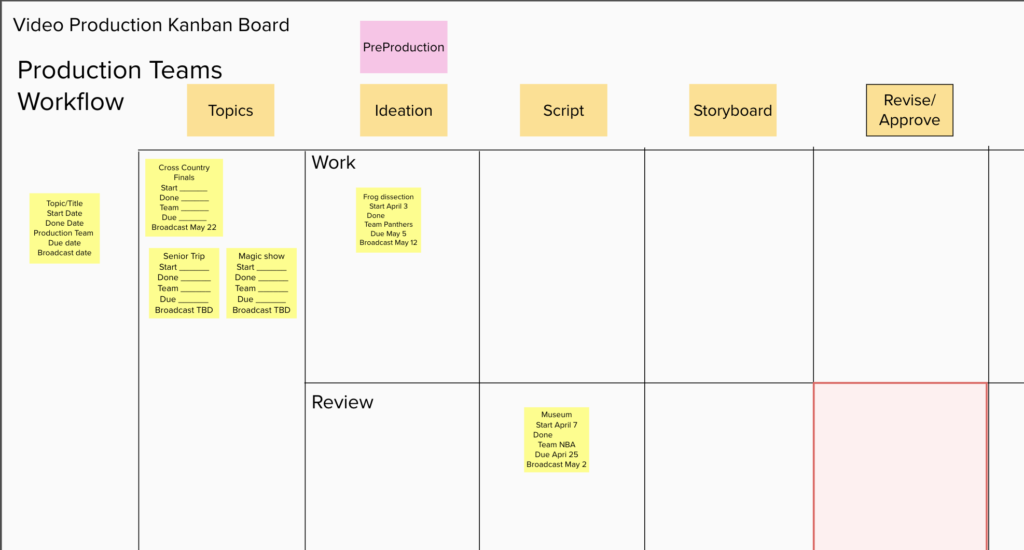
The first step in the process is to define the expected steps for a particular team’s production workflow. You can see the example above where a particular video clip will move from a request from a stakeholder in Topics. For instance, a PTA event planner might request a video ad for a pancake breakfast. Of course, we need the actual planned date for the event itself as well as a target date of when to begin advertising (the Broadcast Date), so people buy their tickets and plan time on their calendar to be at the breakfast. With the target initial air date, the team can plan backwards to see how much time they have to plan, record, and edit the desired ad clip. If their time remaining is only three days, they will probably plan to go with a fairly simple treatment, so as to make the planning, capture, and editing of the project quick and easy. After a delivery date is added (preferably the week prior to broadcast) a team is either assigned or selects the work to complete.
The kanban is set up so that each stage in the production process has a work and a review section. I generally recommend the teams have a peer review or “second pair of eyes” policy in place. This is particularly important if there are multiple student production teams and just one teacher overseeing the broadcast. One thing to keep in mind for the review/test steps is that, if at all possible, get regular review and input from your requesters/stakeholders. The Agile principles of “Our highest priority is to satisfy the customer through early and continuous delivery of valuable [videos].” and “Welcome changing requirements, even late in development. Agile processes harness change for the customer’s competitive advantage.” are good practices for video production teams as well.
If you’d like to explore the kanban system pictured here, you can check out the Mural whiteboard here.
Production Teams Feed Broadcast Team
As the production teams walk the video ad and other clips through the pre-production production and post production steps, the broadcast team is hard at work preparing their scripts and content for the live broadcast workflow. The broadcast team also has a kanban of what their preparation steps are that is different than the production teams’. The broadcast team has several content segments they expect to run during their stint as the broadcast team during their broadcast week. They need to gather all of the clips from the production teams, ensure they are complete, and prepare them in the workflow to air on their target dates.
Broadcast Team Video Production Workflow
The broadcast team workflow follows the following steps:
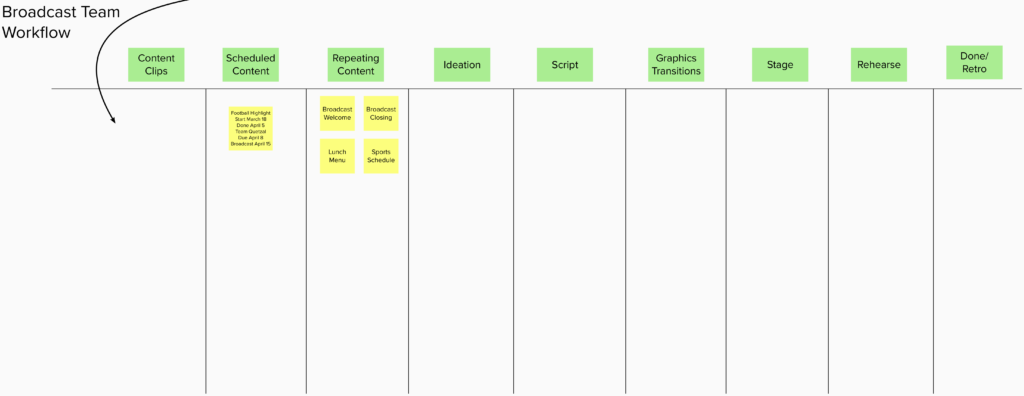
Content Clips is a bucket for all clips that have made it through the video production workflow and are waiting to be aired. Some of these at hard delivery dates. Others may not be tied to any specific delivery planned air date, and will be pulled in when there’s an opening in the schedule.
Scheduled Content is where the broadcast team collects any content that is scheduled to air this week. They collect scheduled clips for the different days of the week. This might be ads, announcements, PSA’s, class or sport highlights, you name it.
The Repeating Content column refers to those segments that appear on either a daily or weekly basis for this particular school broadcast. For instance these may cover the lunch menu, weather, or sports schedule.
In the Ideation step the broadcast team brainstorms on a theme they might have for the week or for the day. Something they use to tie the broadcast together. It could be based on a content clip, a holiday, or something else the team thinks of to inspire creativity.
Script is where the writers get busy creating the words our anchors will use, from the opening lines, the transitions, the banter, and the closing thought.
Graphics/Transitions supporting the theme are then created, collected, and prepared. This is where coordianting with a graphic design class can be helpful. Some of your video editors may create motion graphics and animation, too.
The Stage step in the workflow is where all the clips, graphics, scripts, etc. are loaded into their respective places in the media computer, teleprompter, switcher, etc.
Rehearse is a step that can help any public speaker communicate better.
Retro means that after each show has aired, the team should do a retrospective/look back to consider where they can get better.
Get Started
Please get in touch if your school or small business need help getting started with live streaming video shows or the video production process with a free initial consultation, schedule a call today, or give me a call at 714 four 85 7948.
Learn More
To learn more about Kanban, its history, and how it works, please check out Kanban University, or find out about Kanban training courses in your area.
